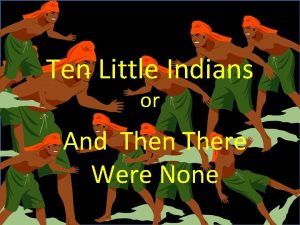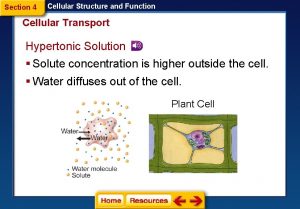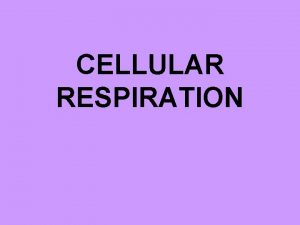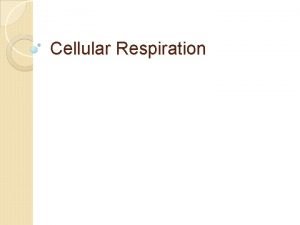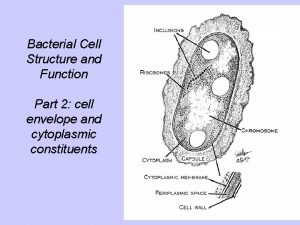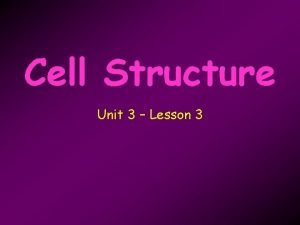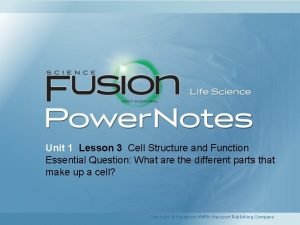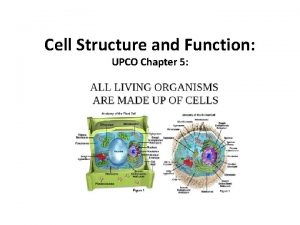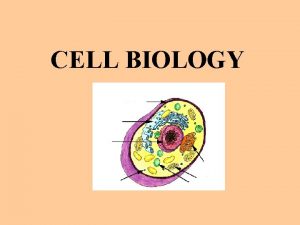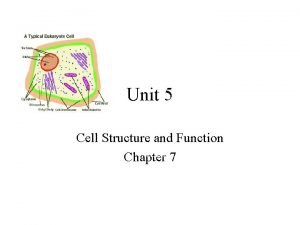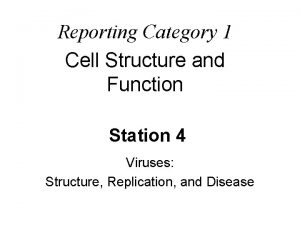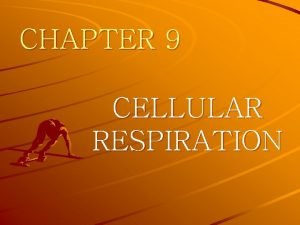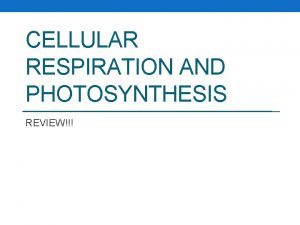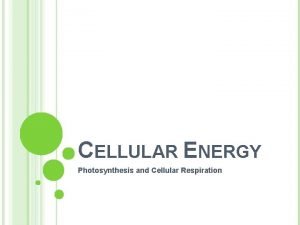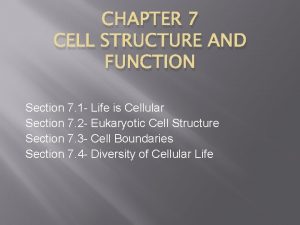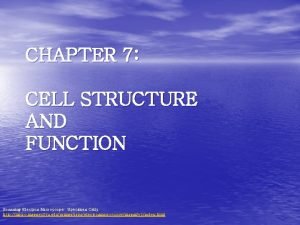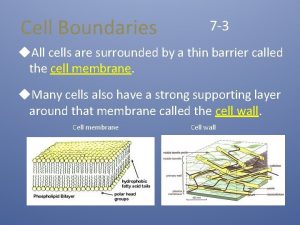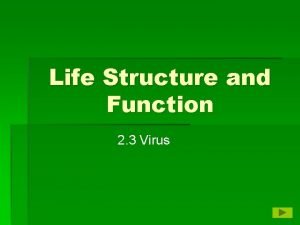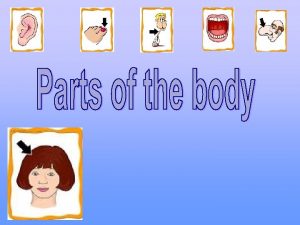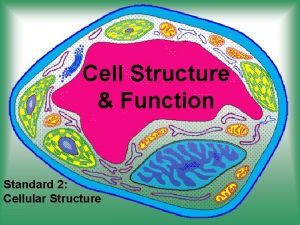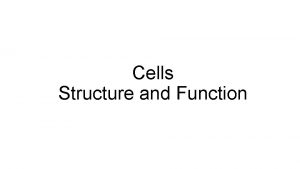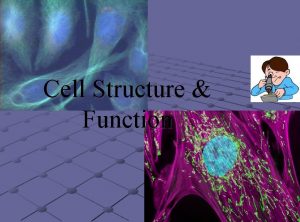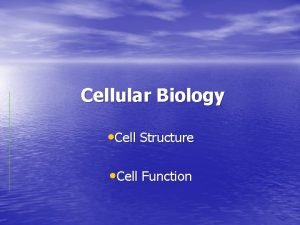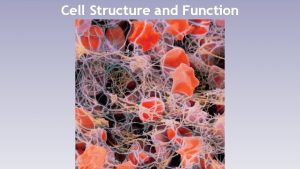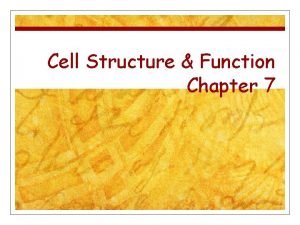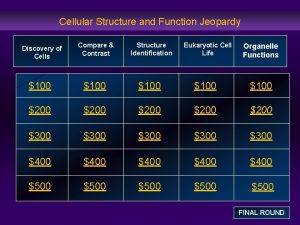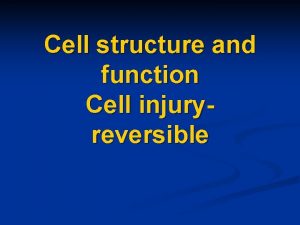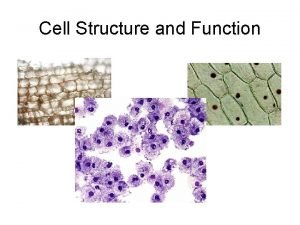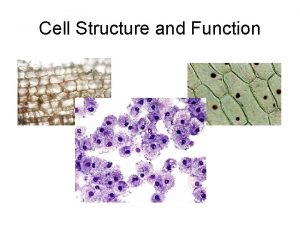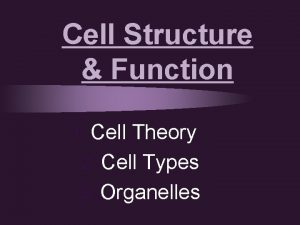Cell Structure Function Life is Cellular A little































- Slides: 31

Cell Structure & Function

Life is Cellular

A little history… § 1600 s: van Leeuwenhoek used microscope to study nature § 1665: Hooke used microscope to look at plant tissue & cork; called them “cells” § 1838: Schleiden concluded that all plants were made of cells § 1839: Schwann concluded that animals are made of cells § 1855: Virchow studied cell reproduction and concluded that cells come from cells

What is a cell? § The basic unit of ALL living organisms. Scale of Life

Cell Theory § All living things are composed of cells. § Cells are the basic units of structure & function in living things. § New cells are made from existing cells.

Types of cells: § Prokaryotes § Eukaryotes

Prokaryotes § Unicellular § No nucleus § Asexual reproduction Example: bacteria

Eukaryotes § Unicellular or multicellular § Nucleus present § Organelles present § Sexual reproduction Examples: plants, animals, people

Prokaryotes & Eukaryotes have: § § Cell membrane Cytoplasm Ribosomes Cell wall (plants only for Eukaryotes)

Cell membrane § The “skin” of the cell. § Protects cell from outside environment. § Regulates flow of water, nutrients & waste.

Cytoplasm § Material inside the membrane (not including the nucleus). § Contains many important structures.

Other cell parts to know: Cell Wall § § § Found outside cell membrane Supports & protects cell Plant cells & some bacteria Cytoskeleton § Maintains shape § Movement Nucleus Organelles

Nucleus § The “brain” of the cell. § Controls cell functions. § Contains DNA. § Surrounded by nuclear envelope.

Organelles § ”Little organs” § Specialized parts of the cell. Examples: ribosomes, mitochondria, chloroplasts, vacuoles

Cell Transport

Cell Membrane § • • Functions: Provides protection and support. Regulates what enters and leaves the cell. • Takes in food and water. • Eliminates waste. • Allows the cell to maintain homeostasis.

The cell membrane is semipermeable. § Some substances can pass through it, while others cannot. § Most biological membranes are semi-permeable.

§ Parts of the Cell Membrane Phosopholipid bilayer: the core of the membrane; forms a strong barrier between the cell and the outside § Protein channels: form pumps to move material through membrane § Carbohydrates: identify the cell; on the outside

Concentration § How many molecules are in a given volume. (How crowded the molecules are. ) § Concentration = Amount of solute Volume of Solution § Every cell is surrounded by liquid and has a liquid interior (cytoplasm) that are solutions of many different substances. High Concentration Low Concentration

Passive Transport: movement from an area of high concentration to areas of lower concentration (getting less crowded); does not require energy § Diffusion § Facilitated Diffusion: molecules that are too large to pass through the cell membrane go through protein channels § Osmosis: the diffusion of water

Osmosis in Cells

Active Transport: movement from an area of low concentration to areas of higher concentration (getting more crowded); requires energy § Exocytosis: when a vesicle fuses with the cell membrane to take material out § Endocytosis: brings material into the cell when a pocket in the membrane breaks off, forming a vesicle

Homeostasis & Cells

Cell Specialization § Cells in multicellular organisms are interdependent. § Cells in multicellular organisms are specialized to perform particular functions in the organism.

Cells – Tissues- Organs. Organ Systems- Organism

Cell § The basic unit of life.

Tissue § A group of cells that perform a particular function. § Four types: § Connective § Epithelial § Muscle § Nervous

Organs § A group of tissues working together to perform a particular function. § Examples: § Heart § Stomach § Lungs

Organ System § A group of organs working together. § Examples: § Nervous system § Circulatory system § Digestive system

Organism § Any living thing.

A Good Review
 1 little 2 little 3 little indian
1 little 2 little 3 little indian 1 little 2 little 3 little indian
1 little 2 little 3 little indian Chapter 7 section 4 cellular transport
Chapter 7 section 4 cellular transport Middle lamella
Middle lamella Cellular transport and the cell cycle
Cellular transport and the cell cycle What type of cell performs cellular respiration
What type of cell performs cellular respiration Where in the cell does cellular respiration occur
Where in the cell does cellular respiration occur Where in the cell does cellular respiration occur
Where in the cell does cellular respiration occur What is part 2
What is part 2 Lesson 3 cell structure and function answer key
Lesson 3 cell structure and function answer key Cell graphic organizer filled out
Cell graphic organizer filled out Endoplasmic reticulum function
Endoplasmic reticulum function Lesson 3 cell structure and function answer key
Lesson 3 cell structure and function answer key Eukaryotic cell structure
Eukaryotic cell structure Chapter 7 cell structure and function section review 7-2
Chapter 7 cell structure and function section review 7-2 Cell structure graphic organizer
Cell structure graphic organizer Chapter 5 cell structure and function
Chapter 5 cell structure and function Plastids in plant cell
Plastids in plant cell Unit 5 cell structure and function answer key
Unit 5 cell structure and function answer key Category 1 cell structure and function
Category 1 cell structure and function Category 1 cell structure and function
Category 1 cell structure and function Category 1: cell structure and function
Category 1: cell structure and function Products of cellular respiration
Products of cellular respiration Function of cellular respiration
Function of cellular respiration Cellular respiration equation
Cellular respiration equation Section 7-1 life is cellular
Section 7-1 life is cellular Chapter 8 lesson 1 life is cellular
Chapter 8 lesson 1 life is cellular Endocytosis moves materials _____ a cell via ____
Endocytosis moves materials _____ a cell via ____ Section 7-4 the diversity of cellular life
Section 7-4 the diversity of cellular life Section 7-4 the diversity of cellular life
Section 7-4 the diversity of cellular life Function
Function Two little feet to tap tap tap
Two little feet to tap tap tap
